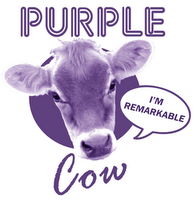« Home | Pondering the future of radio »
Segmentation is crucial for successful strategy (Be Remarkable)
 "Marketing is merely a civilized form of warfare in which most battles are won with words, ideas, and disciplined thinking." (Albert W. Emery)
"Marketing is merely a civilized form of warfare in which most battles are won with words, ideas, and disciplined thinking." (Albert W. Emery)
Segmentation is the most effective driver to create winning words, ideas, disciplined thinking and, ultimately, successful strategies. Segmentation begins customer understanding, allowing organizations to build healthy relationships with their customers. The media marketing sector will be a $1.6 trillion market by 2010...how will your company earn its stake of the future? Up until the mid-20th century, the word "strategy" was mainly a military term, first used as stratēgos by the ancient Greeks, which referred to a 'military commander' during the age of Athenian Democracy. Later, Sun-tzu centered his Art of War on strategy. Machiavelli merged military strategies into political power.
Up until the mid-20th century, the word "strategy" was mainly a military term, first used as stratēgos by the ancient Greeks, which referred to a 'military commander' during the age of Athenian Democracy. Later, Sun-tzu centered his Art of War on strategy. Machiavelli merged military strategies into political power.
Strategy didn't convert into a business term until the Depression forced academic thinkers -- such as John Maynard Keynes and Peter Drucker -- to literally help business and government "think forward" in order to break a desperate and deep economic situation. Strategy meant targeting to create new opportunties.
A strategy typically starts as an idea and ends with increased power or improvements for the owner of the idea. It's always been associated with empire building, which is why it's so tightly linked to war. However, as America's economy influenced the world's economy, the idea of "empire" shifted from the battlefield to the boardroom. New battles were for the minds of consumers and control of their spending habits, not just for kingdoms and property. Persuasion of the masses were not done just with guns and bombs; modern persuasion required strategy, marketing and the media.
For 50 years, TV was the ultimate marketing partner in order to reach the masses. Imagine, advertising we welcomed right in our living rooms! "As Sold On TV"...hey, it's got to be good!
That's been over and done for years. Now that we are "new millenials" and deep into our Great Media Evolution, strategy, marketing and media are still the essential tools for successful business. To use those tools effectively and achieve strategic "victory", business needs to know its new target, which is constantly moving. Dependent on market conditions, consumer demands and brand image perceptions shift, erode, grow or die. New media times require new strategies.
Now that we are "new millenials" and deep into our Great Media Evolution, strategy, marketing and media are still the essential tools for successful business. To use those tools effectively and achieve strategic "victory", business needs to know its new target, which is constantly moving. Dependent on market conditions, consumer demands and brand image perceptions shift, erode, grow or die. New media times require new strategies.
In the past, marketing was unsophisticated. To reach the masses, marketers could "carpet-bomb" campaigns on TV, radio and newspapers. Consumers had fewer media options so this strategy worked because marketing messages could reach nearly the total population. After all, "carpet-bombing" worked as a military strategy. However, just as war's evolution now requires the use of "smart bombs" instead of carpet-bombs, marketing strategy has evolved, too. As "The Economist" recently wrote, marketing is now about small, not large, audiences. New millenial marketing requires multi-platform sub-niche strategies that precisely reach their intended target. As author Seth Godin says in Purple Cow, being safe and boring is risky. Look at radio, look at NBC (and most of the cable channels), look at the advertising in any newspaper. Safe and mainly boring, not compelling or remarkable. When do billboards work? When they tease or boldly break beyond their rectangular dimensional space. To get heard through all the noise and clutter, today's marketing messages, programming and products need to be remarkable. There is no mass media anymore, just lots of free-wheelin' micromedias -- some with larger audiences than others.
As author Seth Godin says in Purple Cow, being safe and boring is risky. Look at radio, look at NBC (and most of the cable channels), look at the advertising in any newspaper. Safe and mainly boring, not compelling or remarkable. When do billboards work? When they tease or boldly break beyond their rectangular dimensional space. To get heard through all the noise and clutter, today's marketing messages, programming and products need to be remarkable. There is no mass media anymore, just lots of free-wheelin' micromedias -- some with larger audiences than others.
Be remarkable, not safe and boring. And target the remarkable consumers best for you, not just the massess. How is that done best?
Segmentation, for starters.
You have to know your market and know what links the customers driving that market...the customers with influence. What is segmentation? In layman terms, segmentation determines -- through market researched statistical techniques -- unique sub-groups of people with common likes and dislikes within a larger customer population. For example, in TV, some people just like comedy; others may only prefer news and talk shows. The list of different TV segments is long. Same thing for radio, music downloaders, e-zine readers and bloggers, and the rest of the multi-media universe. What's important is learning each segment's (or sub-group's) commonalities, demands and attributes...what makes them different than the rest of the target population...and how they impact or determine various business strategies.
What is segmentation? In layman terms, segmentation determines -- through market researched statistical techniques -- unique sub-groups of people with common likes and dislikes within a larger customer population. For example, in TV, some people just like comedy; others may only prefer news and talk shows. The list of different TV segments is long. Same thing for radio, music downloaders, e-zine readers and bloggers, and the rest of the multi-media universe. What's important is learning each segment's (or sub-group's) commonalities, demands and attributes...what makes them different than the rest of the target population...and how they impact or determine various business strategies.
Essentially, proper segmentation gives marketers precise targeting in order to achieve successful strategies. In this hyper-competitive time for media companies, effective market segmentation is the #1 information advantage for the battle of today's consumer minds, whether you are on-line, over-the-air, wireless or in-print. Why? Because so few companies make the investment to segment properly. Too complex, costs too much, no budget and other excuses. If segmenting is done, it is done rarely. It is all too common for companies to segment only once in 4 years (if at all). This is true in all media platforms, mainly because of cost issues and an expectation that markets don't shift that much in 4 years.
In this hyper-competitive time for media companies, effective market segmentation is the #1 information advantage for the battle of today's consumer minds, whether you are on-line, over-the-air, wireless or in-print. Why? Because so few companies make the investment to segment properly. Too complex, costs too much, no budget and other excuses. If segmenting is done, it is done rarely. It is all too common for companies to segment only once in 4 years (if at all). This is true in all media platforms, mainly because of cost issues and an expectation that markets don't shift that much in 4 years.
Really? 4 years ago, the iPod and iTunes (still only for Mac users) was just getting hot. Broadband was in less than 4% of American homes. No cable system had HD digital delivery systems. Satellite radio was brand new with virtually no subscribers (which now are more than 10 million). In 2002, words like "blog" and "podcast" were pure geek science. ESPN and other networks now send custom programming to be viewed on cellphones. Think the media universe and how consumers use media hasn't changed much in 4 years?
Do you think target segments have remained the same? Think again.
Nowhere is segmentation most dramatically under-utilized than with web analytics. Strangely, with the amount of natural data constantly collected with web usage, you'd think that segmentation would be a given. But it's not. A recent JupiterResearch study found using Web analytics to target e-mail campaigns can produce nine times the revenues and 18 times the profits of broadcast mailings. Yet the same research says few marketers are using segmentation techniques.
The same is true for all companies utilizing media for their marketing, programming and content distribution. Consumers typically use media -- in one form or another...or several at the same time -- for nearly half of every 24 hour day. Reasons for the lack of segmentation, in general, are clear:
Reasons for the lack of segmentation, in general, are clear:
1) Marketers (and the people responsible for putting marketing decisions into action) are suffering from tactical information overload (you name it, we all can get instant time media reports on deliverables),
2) Multi-tasking "do more with less" marketers are trying to do great things with little time and few resources (creating less than great results),
3) "Fix-and-run" decision makers can't slow down long enough to process the meaning of segmentation and how to effectively use the information,
4) Segmentation is still viewed as an investing luxury, not a necessary cost of wisely doing business to gain advantage.
As mentioned earlier, whether you are on-line, over-the-air, wireless or in-print, segmentation is the #1 information advantage for the battle of today's consumer minds. If you're not segmenting every year or so, you are missing a huge competitive advantage and probably wasting revenue on ineffective marketing campaigns. So, how can you start using segmentation? Well, for starters, you can contact us at Joint Communications. We've been market segmenting since 1977, helping media companies around the globe win their perception battles with words, ideas and disciplined thinking...and successful strategic results.
Well, for starters, you can contact us at Joint Communications. We've been market segmenting since 1977, helping media companies around the globe win their perception battles with words, ideas and disciplined thinking...and successful strategic results.
posted by Unknown @ Friday, June 30, 2006,
![]()
![]()















